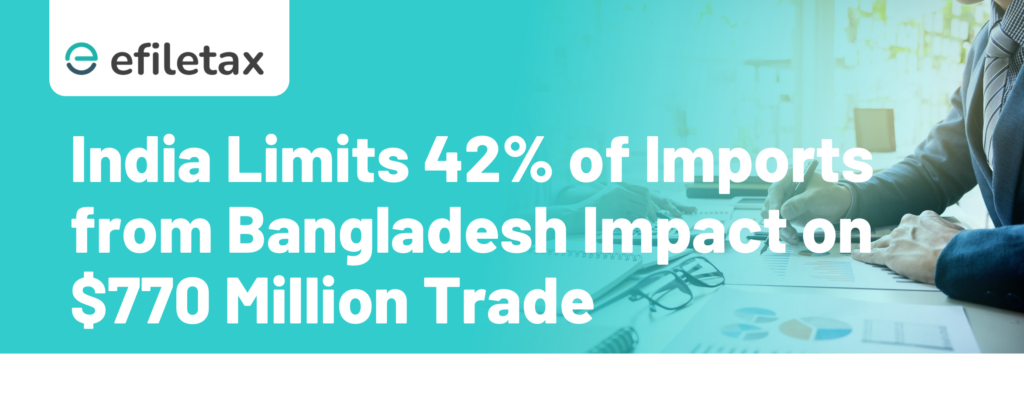
India Limits 42% of Imports from Bangladesh What It Means for Indian Importers
In a bold trade move, India has restricted 42% of imports from Bangladesh, affecting over $770 million worth of goods. This update, flagged by the Global Trade Research Initiative (GTRI), has significant implications for customs duties, GST compliance, and business strategy for Indian importers.
Let’s simplify the numbers, tax impact, and what Indian traders need to do next.
Why Did India Restrict These Imports?
According to GTRI’s analysis, India’s move is a countermeasure in response to Bangladesh’s non-tariff barriers (NTBs) that affect Indian exports.
Key triggers include:
- Delays in certification for Indian agricultural products
- Imposition of new testing requirements
- Discriminatory licensing norms in Bangladesh
- Surge in duty-free exports from Bangladesh due to Least Developed Country (LDC) benefits under SAFTA
India’s decision aims to rebalance trade flows and protect domestic industries, especially textiles and processed food sectors.
Which Goods Are Affected?
The import restrictions apply to categories covering nearly $770 million, out of India’s $1.9 billion annual imports from Bangladesh.
| Affected Sector | Estimated Import Value (USD) | Notes |
|---|---|---|
| Textiles & Garments | $300M | Major blow to Bangladesh’s key export |
| Agro-based Products | $200M | Includes processed food, fish items |
| Leather & Footwear | $120M | India aims to protect its MSMEs |
| Plastics & Chemicals | $100M | Includes packaging and base chemicals |
| Others | $50M | Household, electronics, miscellaneous |
What Indian Importers Must Know (Tax + Legal Angle)
1. Customs Duties May Change
These goods could face higher Basic Customs Duty (BCD) or withdrawal of duty exemptions under SAFTA.
2. GST Credit Eligibility
Ensure you retain proof of import documentation. If restrictions convert into bans or higher tariffs, ITC eligibility could be questioned in GST audits.
3. Risk of Classification Disputes
Some importers may try to reclassify affected goods to avoid higher duties. This can trigger customs inquiries under Section 28 of the Customs Act, 1962.
4. Impact on Advance Authorisations
If you import under duty-free EPCG or AA licences, ensure your products are still eligible. DGFT may soon issue revised FAQs.
Expert View: Plan for Alternative Sourcing
According to trade analysts at FIEO, Indian businesses should pre-emptively explore alternative sourcing routes like Vietnam, Indonesia, and Sri Lanka.
“Tax impact aside, the real challenge is continuity of supply. Start exploring ASEAN alternatives now, especially for textile and food inputs.”
— FIEO Senior Policy Expert
Strategic Tips for Indian Businesses
- Recheck all HS codes for imports linked to Bangladesh
- Talk to your CHA (Customs House Agent) to track duty changes
- Stock up if short-term supply risk exists
- Consult your CA or Efiletax for GST credit clarity
- Watch for DGFT trade notice or CBIC updates soon
FAQs
Q1. Are these restrictions permanent?
No. They are likely temporary or strategic, but could be extended if NTBs from Bangladesh continue.
Q2. Will my existing consignments be blocked?
Only new imports after notification date may face restrictions. Track ICEGATE and CBIC for updates.
Q3. Is GST still payable on restricted imports?
Yes. GST is payable even on restricted goods unless explicitly banned. Claim ITC only with full documentation.
Closing Note
India’s move to limit imports from Bangladesh isn’t just a trade policy—it directly affects compliance, GST planning, and sourcing strategies. If your business imports from Bangladesh, now’s the time to act.
Summary
India has restricted 42% of imports from Bangladesh, impacting $770M worth of goods. Know the GST and customs implications for Indian importers, including affected sectors and strategic sourcing tips.